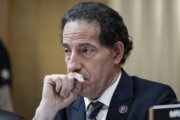The cost of goods and services is constantly in flux. In general, businesses have the right to set prices at will.
The amount you pay will rise and fall based on many factors and it can happen very quickly, multiple times a day. It’s called dynamic pricing. Although it can be tempting to concentrate only on the effect it has on making things more expensive, it can also lead to bargains.
Misinformation about dynamic pricing abounds, though. A 2024 CivicScience survey found that 68% of consumers view the practice as price gouging, which happens when a merchant takes financial advantage of an emergency.
But is it? Here’s how dynamic pricing works, and the way it affects both consumers and commerce.
How Dynamic Pricing Works
For businesses, from small corner markets to airlines, setting the correct price for a product or service is an economic art. Outside of loss leaders — when a seller prices something below its real value to draw sales in for other more lucrative items — turning a profit from each sale is important.
Businesses want repeat customers, too, so a positive perception is also crucial. If you’re hungry enough and there are no other reasonable options at the time, you may pay $25 for a sandwich. But if it leaves a sour taste in your mouth, you may not return – and spread the word to others that it wasn’t worth the price.
As a strategy, dynamic pricing is largely based on factors including market trends, historical data, how much competitors are charging for the same or similar items, geography and customer preferences. It uses machine learning and artificial intelligence algorithms to adjust prices in real time.
In general, businesses that use dynamic pricing will raise prices when demand is peaking and lower them when demand wanes.
“The most evident example is Uber,” says Reilly Newman, founder and brand strategist of Motif Brands in Paso Robles, California.
“As demand goes up they can increase the price according to the value. Someone who needs to go home at that time may be willing to pay the surge price but others may wait it out,” he says.
How Dynamic Pricing Differs From Price Gouging
Imagine there’s a natural disaster, such as an earthquake or hurricane in your community. Within hours, the need for water, food, batteries and other necessities becomes extreme.
In response, a grocery store owner may decide to significantly hike up the price for those essentials. Only the very wealthy would be able to purchase such things, leaving the rest to suffer.
That’s price gouging, and many states have laws prohibiting the practice. It’s usually based on recent average prices in an area before the emergency occurred. Depending on the state, price increases of 10% to 15% may be considered excessive.
Outside of that, a price surge may be irritating, but it’s not gouging. You may even anticipate it during certain holidays, like Valentine’s Day, when procrastinators will pay a premium for gifts. A florist may normally charge $15 for a dozen roses but on Feb. 14 they’re $20. The next day the leftover bouquets may go on sale for $10.
Jeffrey Moriarty, executive director of the Hoffman Center for Business Ethics at Bentley University in Waltham, Massachusetts, says that while such dynamic pricing can feel exploitative, it happens in markets where people have other options.
E-commerce and Dynamic Pricing
Online retailers are well-versed in dynamic pricing. As an Amazon shopper, for instance, you may notice that the price of something you’ve had your eye changes multiple times a day.
The online retail giant sets the price with an algorithm that factors in not just supply and demand and how much other online retailers are charging, but also the number of clicks that item has generated, the way people are behaving on the platform and the season.
“The same product may be priced differently if you purchase through your phone versus your computer, and how often you have visited the site,” Moriarty says.
This type of dynamic pricing is not without controversy, however. In 2020, Amazon was forced to apologize and issue refunds after customers learned the company had been charging some people more than others in random price testing.
Restaurants and Dynamic Pricing
Fast food eateries, chain restaurants and cafés have started to implement dynamic pricing. The cost of the items can be adjusted based on algorithms that track customer visit data, demand, market changes and peak versus slow times.
Dynamic pricing can be a way to encourage customers to visit during less popular days and hours by offering lower prices and discounts while optimizing profits with higher prices when it’s busier.
Restaurants do have to be especially sensitive to how customers will react, though. Raising the price of a burger during the lunch rush can turn people off even when they know it will be available for less at a different time of day.
When Wendy’s announced in 2024 it would start using such algorithms , the public balked. The company then announced it would use dynamic pricing only to lower prices during traditionally slow periods, not raise them at other times.
[These Are the Cheapest Restaurants to Feed a Family]
Entertainment and Dynamic Pricing
When there’s great demand for specific athletic games, concerts, Broadway shows and other live events, ticket sellers may raise the price with the help of dynamic-pricing algorithms. After all, there’s a finite number of seats at an arena or venue, so supply is inherently limited.
Ticketmaster, a sales and distribution company, has adopted a dynamic-pricing strategy and you can watch prices for the same event change in real time. Although you can find budget-friendly deals, highly desired events – such as Taylor Swift concerts – can come at extreme costs.
“When consumers are not expecting it, dynamic pricing can cause serious anger,” Moriarty says. “But prepare; you can strategize to get cheaper tickets.” For example, you can buy from the box office or take advantage of pre-sale events.
[This Is the One Thing Americans Refuse to Stop Spending On]
Airlines and Dynamic Pricing
Dynamic pricing is especially apparent when you’re in the market for airfare. Flying on weekends tends to be more expensive than weekdays, and prices can really escalate during travel-heavy holidays like Thanksgiving and Christmas.
“Most airlines use dynamic-pricing software,” says Mark Boidman, partner and head of global media at Solomon Partners in New York City.
“They’ve perfected it, and constantly monitor the market. As flights are in demand, prices go higher. They can vary by time of day, location, weather and other factors,” he says.
There are ways to avoid the surge, though. If you can be flexible with your travel dates, that’s a start.
Many airlines provide an online calendar where you can see how prices vary on certain days of the month.
For example, you might find a Southwest Airlines flight from San Francisco to New York in November for a low of $134 and a high of $461. Same route, different days. Check again a few hours later and you may find better or worse deals.
You can also get the cheapest airfare by using price-racking tools like Skyscanner and setting airfare alerts so you’ll know immediately when prices go down.
When you think they won’t go any lower, get ready to purchase. That way, you won’t get stuck as your travel date nears and competition for the same flight intensifies.
[READ: Does Google Flights Really Save You Money?]
Dynamic Pricing Isn’t Going Away
Just about every industry can use dynamic pricing. E-commerce sites, eateries, ticket sellers and airlines are just some examples. You’ll find it at hotels, brick-and-mortar retailers, supermarkets, gas stations, car rental companies and more businesses as they seek to refine operations.
Although dynamic pricing may seem futuristic because it uses real-time technology, according to Moriarty the concept is very old.
“Uniform pricing, where everything has a price on it, is relatively recent and we’ve come to expect it,” he says.
“This is opposed to a range where buyers and sellers negotiate. Dynamic pricing is just going back to the norm. Companies are figuring out how much you’re willing to pay for something you want,” he adds.
While people of older generations may balk at dynamic-pricing practices, Boidman asserts that younger people aren’t fazed by it.
“It’s the future,” he says. “Companies will be changing their prices hundreds or thousands of times a day. That means the consumer has to be smarter and sensitive to that. Know it’s happening. Shop around, be diligent.”
But also try not to worry.
“In the end it doesn’t matter,” Boidman says.
“There will be times when you pay more money; other times you’ll save more money. It balances out. As long as consumers have choice, dynamic pricing should provide more opportunities over the long term,” he adds.
More from U.S. News
How Much Should I Spend on Groceries?
How to Save on Everyday Expenses
Extreme Couponing 101: How to Get Free Money at the Grocery Store
What Is Dynamic Pricing, and Why Has It Made Everything So Expensive? originally appeared on usnews.com
Update 10/18/24: This story was published at an earlier date and has been updated with new information.







